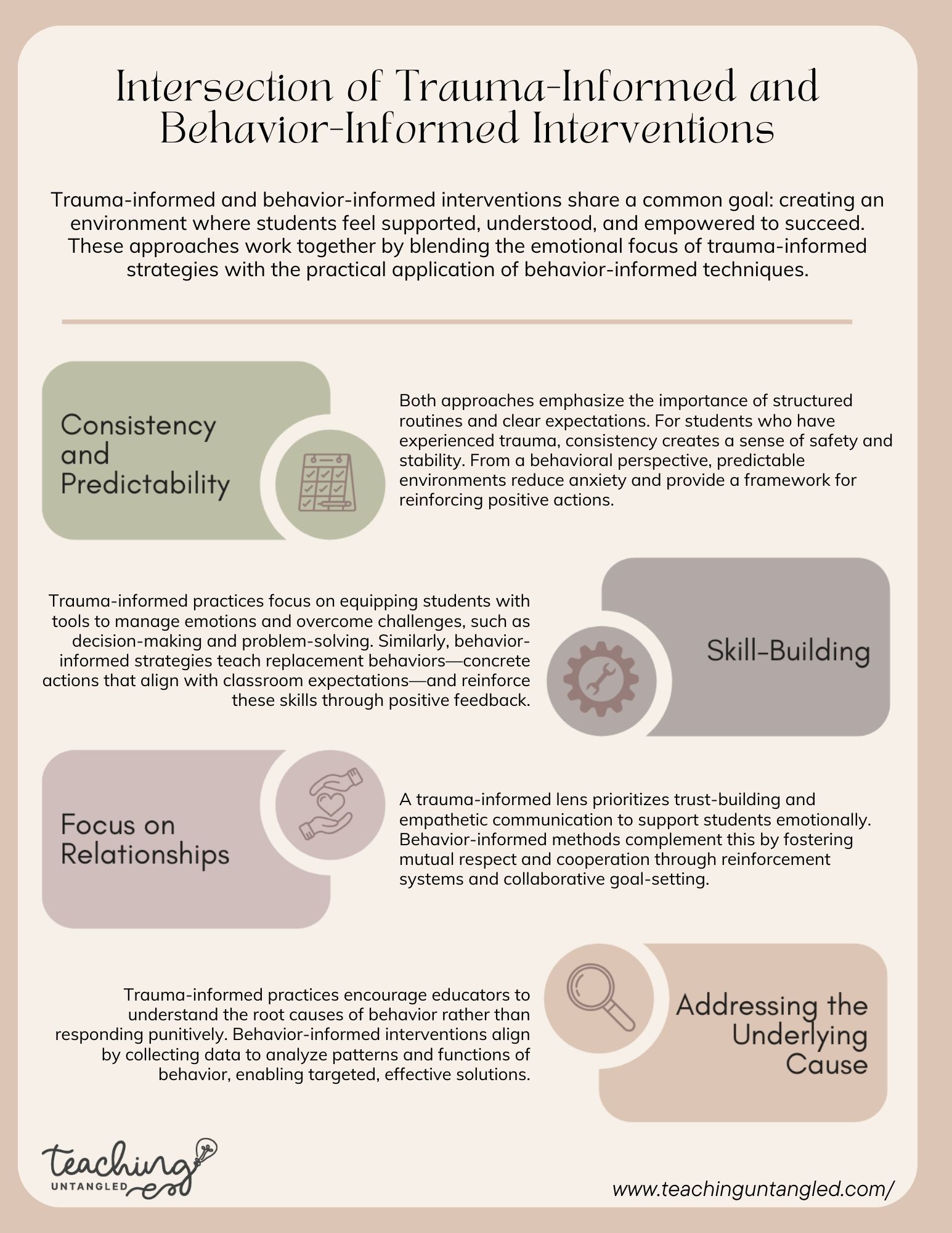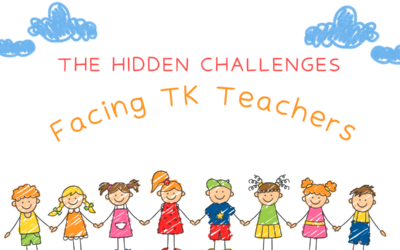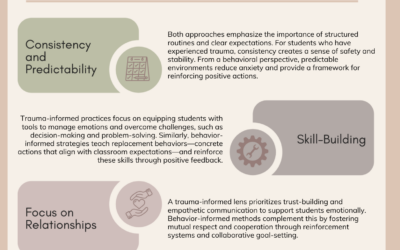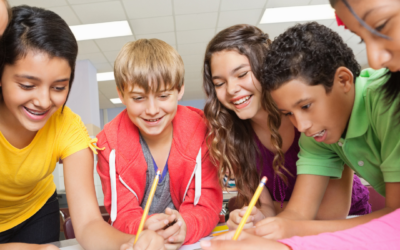Creating a supportive classroom environment is essential for fostering both academic and emotional growth. As educators, understanding how trauma impacts behavior and integrating trauma-informed strategies with behavioral interventions can profoundly impact students’ success. Here’s how these approaches align and practical ways to implement them.
Why Trauma-Informed Practices Matter
Trauma affects 1 in 4 students before adulthood, influencing emotional, social, and academic development. Schools can serve as safe spaces that promote healing by providing consistent support and fostering resilience. Teachers play a critical role by helping students develop self-regulation skills like sitting calmly, waiting their turn, and managing emotions. These life skills not only improve classroom behavior but also lay the groundwork for long-term success.
The Intersection of Trauma-Informed and Behavior-Informed Interventions
Trauma-informed and behavior-informed interventions share a common goal: creating an environment where students feel supported, understood, and empowered to succeed. These approaches work together by blending the emotional focus of trauma-informed strategies with the practical application of behavior-informed techniques.
Key overlaps include:
- Consistency and Predictability: Both approaches emphasize the importance of structured routines and clear expectations. For students who have experienced trauma, consistency creates a sense of safety and stability. From a behavioral perspective, predictable environments reduce anxiety and provide a framework for reinforcing positive actions.
- Skill-Building: Trauma-informed practices focus on equipping students with tools to manage emotions and overcome challenges, such as decision-making and problem-solving. Similarly, behavior-informed strategies teach replacement behaviors—concrete actions that align with classroom expectations—and reinforce these skills through positive feedback.
- Focus on Relationships: A trauma-informed lens prioritizes trust-building and empathetic communication to support students emotionally. Behavior-informed methods complement this by fostering mutual respect and cooperation through reinforcement systems and collaborative goal-setting.
- Addressing the Underlying Cause: Trauma-informed practices encourage educators to understand the root causes of behavior rather than responding punitively. Behavior-informed interventions align by collecting data to analyze patterns and functions of behavior, enabling targeted, effective solutions.
By blending these approaches, educators can address both the emotional and functional aspects of student behavior. For instance, a student acting out due to anxiety may benefit from trauma-informed support (validating their feelings and ensuring a safe space) alongside behavior-informed interventions (teaching and reinforcing calming techniques).
These strategies are not standalone; they are complementary tools that, when used together, create a holistic framework for helping students thrive.
Trauma-informed and behavior-informed practices are not just complementary—they are essential for creating inclusive, supportive learning environments. By integrating these strategies, educators can empower students to overcome challenges, build resilience, and thrive academically and emotionally. Let’s embrace the opportunity to be both educators and changemakers in our students’ lives.





